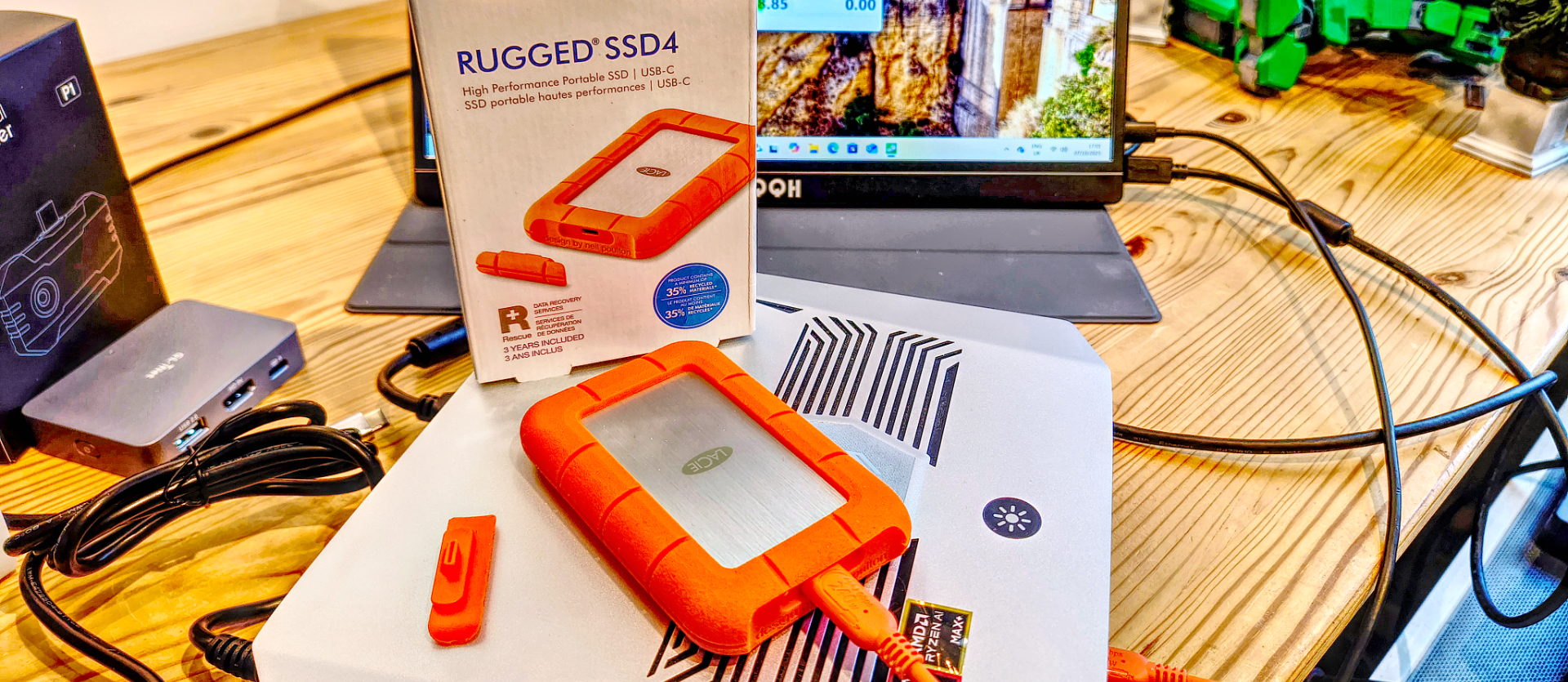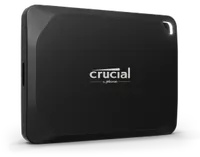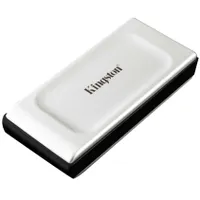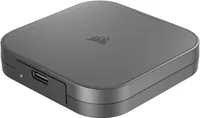TechRadar Verdict
Considering the price, it's disappointing that LaCie never considered where the port plug and cable would reside. What you don’t get for the outlay is a lot of software, but you do get performance if you have the ports to exploit it.
Pros
- +
USB 4 support
- +
Tough and compact
- +
Has hardware encryption
Cons
- -
Overpriced
- -
No USB-A cable adapter included
- -
The port cover is easily lost
- -
No firmware updates
Why you can trust TechRadar
One-minute review
LaCie has many similar-looking external drives that are hard to differentiate due to their similar names and promotional images, so determining this one from the others isn’t easy.
They all have an orange bumper that makes them look like inflatable life rafts, although this feature does provide additional protection from being dropped from up to 2 meters.
About the size of an old cigarette packet, the LaCie Rugged SSD4 is functionally identical to the Rugged Mini (STMF2000400), but the electronics inside have been altered to support USB4 connectivity. The drive will still function with USB 3.2, although to connect to USB-A ports, you will need to source an adapter, as LaCie does not include one.
If you connect it to a USB4 port with 40Gbps mode, you can achieve read speeds of over 4,000MB/s and write speeds in excess of 3,600MB/s. Having only 20Gbps ports halves those numbers, and over USB 3.2 Gen 2, typical transfer speeds are 1,000Mb/s.
Capacities are 1TB, 2TB, and 4TB, providing ample space for 4K video captures or impressively large data sets.
Prices start at $119.99, and the largest capacity is $399.99. Because this isn’t a cheap option for these capacities, this is only suitable for someone who has a USB4 port and will only connect to machines with that port.
The performance is excellent, up there with the best rugged SSD we've tried, but it's double the price of less idiosyncratic designs for the same amount of storage space. While it ticks the transfer speed boxes, the LaCie Rugged SSD4 isn’t the best design, and it scores poorly on value for money.
Sign up to the TechRadar Pro newsletter to get all the top news, opinion, features and guidance your business needs to succeed!
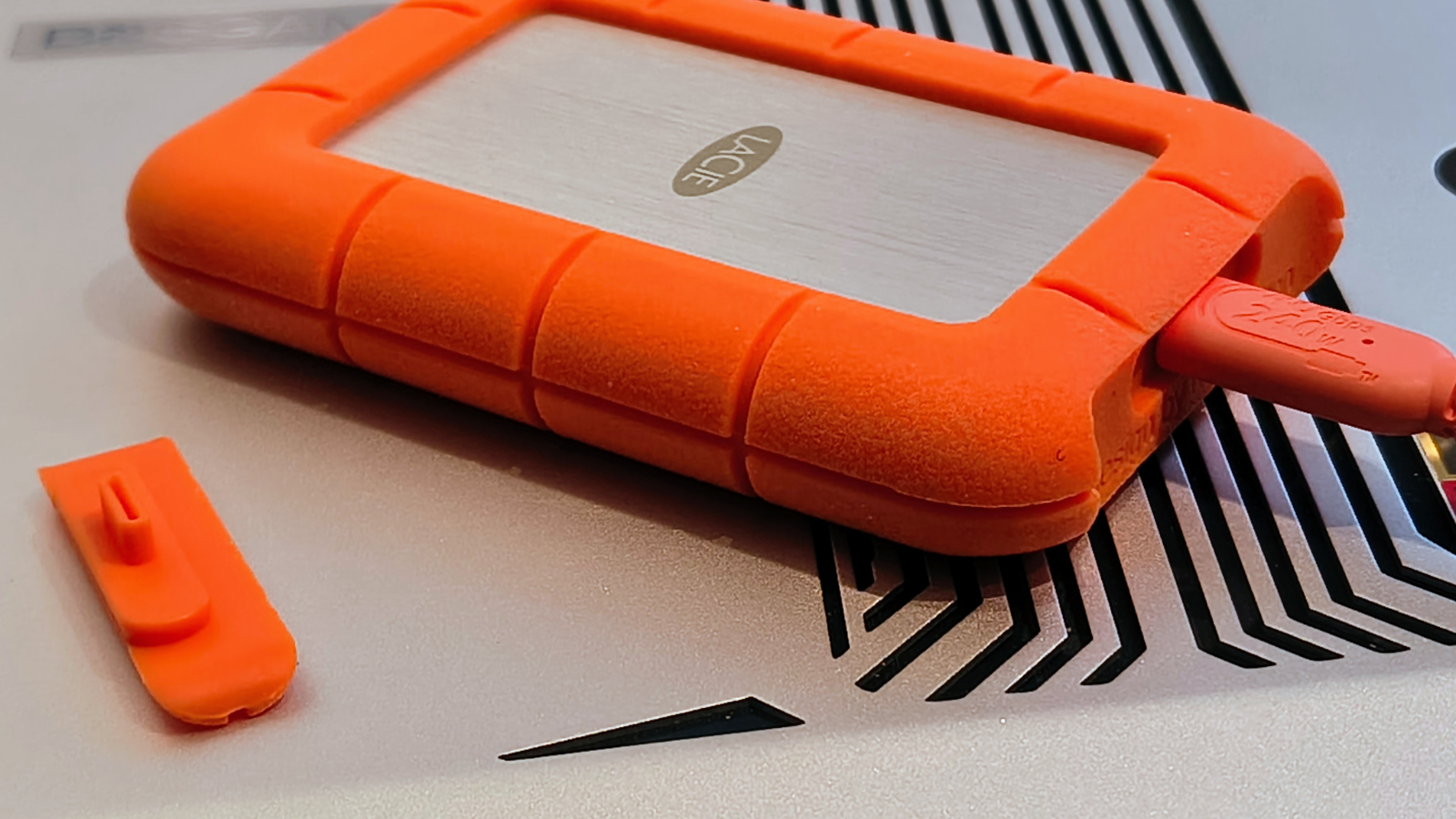
LaCie Rugged SSD4: Pricing and availability
- How much does it cost? From $119.99/147.99 for 1TB model
- When is it out? It is starting to be available now
- Where can you get it? Direct from Crucial or through online retailers like Amazon.
Even before they became part of the Seagate business in 2012, LaCie had a reputation for high-quality hardware that came with a premium price.
Obviously, when your customers expect things to be expensive, LaCie appears to see no need to disappoint them.
The price directly from the maker in the USA is $119.99 (1TB), $214.99 (2TB) and $399.99 (4TB), making this unit one of the more expensive external SSDs available. It's also available on Amazon.com.
But pricing outside the USA is counterintuitively even more expensive, with the same drive capacities costing £203.99, £419.99 and £599.99 in the UK. Considering that LaCie manufacturing is in France, this additional cost makes zero sense.
To put these prices into perspective, many external SSD makers are selling their 4TB models for less than LaCie is asking for its 1TB option.
As a comparison, the Corsair EX400U, a drive with a similar performance envelope, costs $139.99, $209.99, and $369.99 for the same capacities directly from Corsair. But on Amazon.com these can be had for $109.99, $199.99 and $359.99, undercutting LaCie at each capacity.
The question you need to ask yourself is what about this drive is worth the premium LaCie has applied to it? Because from this reviewer's perspective, there isn’t much.
- Value: 3 / 5
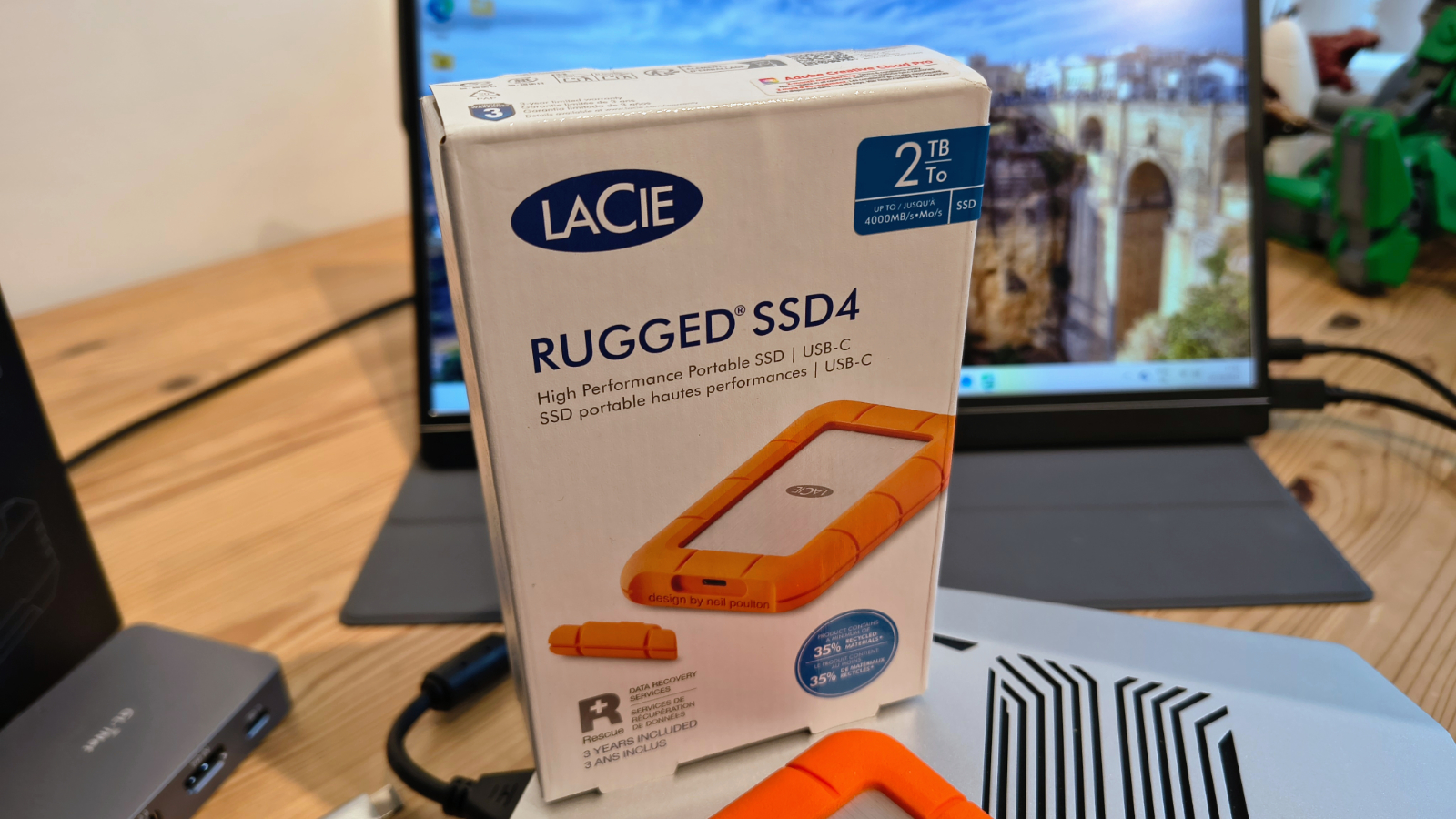
LaCie Rugged SSD4: Specs
Model No. | STND1000400 |
Capacities | 4TB/2TB/1TB |
Capacity tested | 2TB |
Tested sequential performance (Read/Write) | 4068/3741MB/s |
Connection | USB 40 Gbps, USB 20 Gbps, USB 10 Gbps, USB 5 Gbps1, Thunderbolt 5, Thunderbolt 4 and Thunderbolt 3 |
Encryption | Hardware |
Dimensions | 105.3 x 66.9 x 17.3mm (WxHxD) |
Weight | 108g |
Warranty | 3 years |
LaCie Rugged SSD4: Design
- Inflatable raft aesthetic
- Rugged-ish
- 3-year warranty
As I’ve talked about previously, all of Lacie’s rugged drives have this mini-inflatable-raft aesthetic, which means that these devices are metaphorical lifeboats.
That’s an interesting iconography, but other than protecting the drive from clumsy owners, there seems to be relatively little about these choices that make this product better.
And, another repeating theme of my external storage reviews, even with this bulbous orange bumper in place, this drive is only rated as IP54 and certified for a fall of two meters and 1000lbs of crushing force.
Being realistic, any solid-state electronics without a bumper should survive a fall of that distance, even onto a hard surface and still work. With the bumper on, this is a very low bar to clear, since all the Corsair X series drives can manage that level of survivability without a bumper.
The IP54 rating suggests that it offers protection against limited dust ingress and splashing water from any direction. That doesn’t make it waterproof.
To achieve this rating, I’d suggest that we can assume the plug covering the USB port is in place, which we all know it won’t be, because the drive will have the cable attached from the moment it comes out of its packaging to the point it eventually stops working.
So, what happens to the plug? It’s lost, because there is nowhere on the drive to place it once it's removed. If the plug is replaced, then there is nowhere for the cable to be stored.
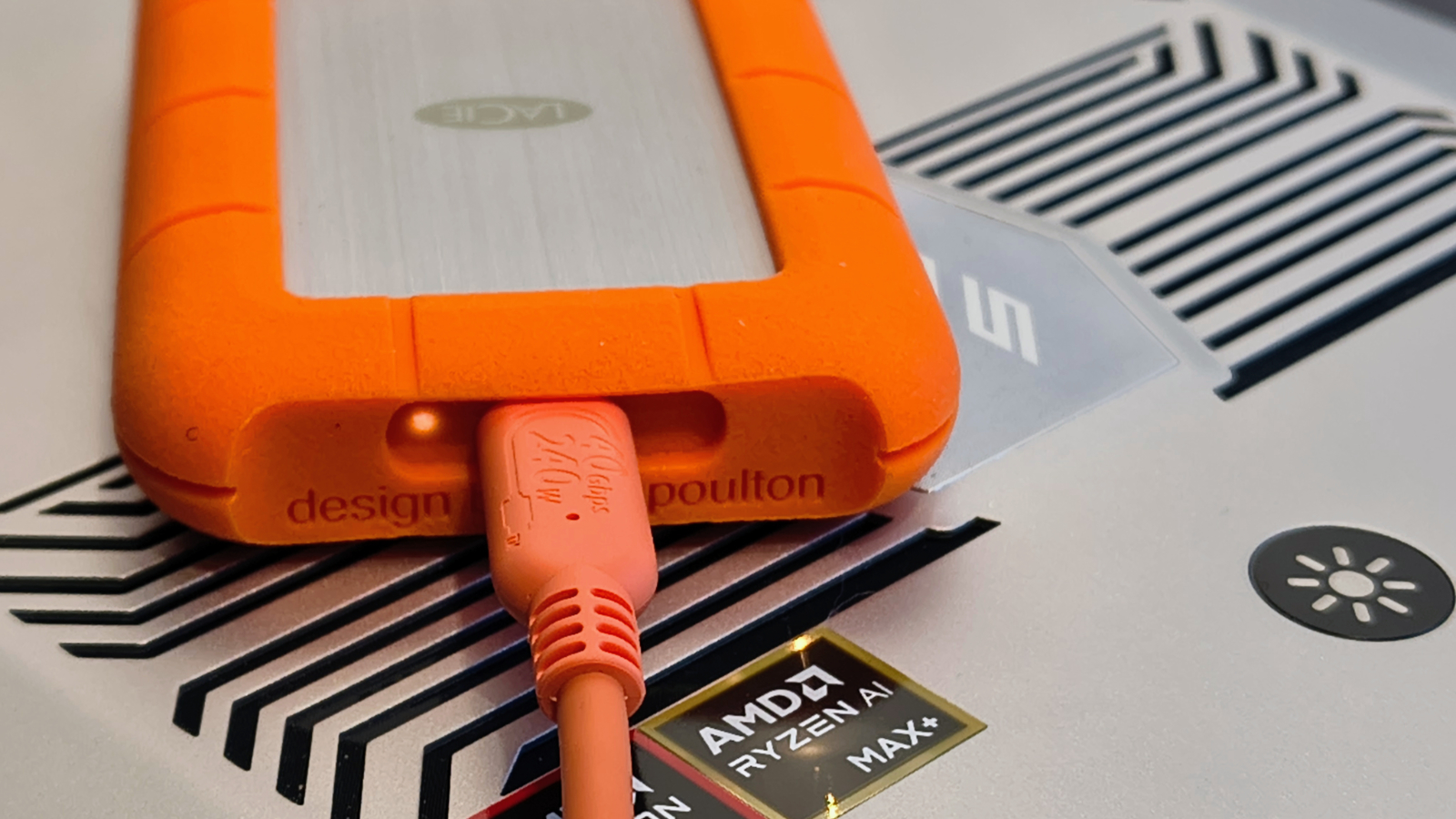
What sort of twists my noodle is that when you remove the plug emblazoned on the bumper, is the relief ‘designed by neil poulton’. He is a Scottish-born industrial product designer based in Paris, which is why I presume that LaCie used his company for this project.
Not sure what brief he was given, but not misplacing the plug or storing the cable evidently weren't priority requirements.
Neither were all those people with USB-A ports, because there is no adapter in the box, even if including one would have cost LaCie pennies.
Overall, it might look distinctive, and it’s nicely engineered, but phones come with waterproof USB ports that don’t need a plug, and other external drives have integrated cables and USB adapters.
- Design: 3 / 5
LaCie Rugged SSD4: Software
- Adobe trial
- Seagate software
- No firmware tool
This external drive, like many others from different brands, comes with a two-month free subscription to Adobe Creative Cloud All Apps Plan. If you’re already paying for it, you won’t get another couple of months for free, and if you aren’t, you’ll be adding another $54.99 to your monthly expenses for Adobe’s expensive software once the two months are up.
There’s the LaCie Toolkit, which lets you sync folders to the drive automatically. It’s the same software Seagate (the parent company of LaCie) offers with many of its drives. You can back up standard folders, such as documents and pictures, and set up your own custom folders to keep them safe. It’s not the best syncing software out there, but it does the job, which is what most buyers of this drive would expect.
On the downside, there are no cloud storage options or tools available to check for firmware updates. What’s a little disturbing is that if you use the Seagate-approved drive detect tool on this drive, it doesn’t recognise the serial number, and therefore can’t offer you any firmware.
Considering the asking price, the included software is limited and needs updating.
- Software: 3 / 5
LaCie Rugged SSD4: Performance
- Needs USB4 40Gbps
Bench | Test | LaCie Rugged SSD4 2TB | Corsair EX400U 2TB |
|---|---|---|---|
CrystalDiskMark 8.04 | Default Read | 4058 | 4056 MB/s |
| Row 1 - Cell 0 | Default Write | 3741 | 3630 MB/s |
| Row 2 - Cell 0 | Real World Read | 2034 | 2303 MB/s |
| Row 3 - Cell 0 | Real World Write | 2542 | 3269 MB/s |
AJA System Test 16GB | Read | 3235 | 2827 MB/s |
| Row 5 - Cell 0 | Write | 3249 | 2638 MB/s |
AS SSD | Read | 3326 | 3506 MB/s |
| Row 7 - Cell 0 | Write | 2638 | 3197 MB/s |
ATTO | Read | 3780 | 3780 MB/s |
| Row 9 - Cell 0 | Write | 3490 | 3470 MB/s |
PCMark Data Drive Bench | Row 10 - Cell 1 | 1791 | 2028 |
Since the LaCie Rugged SSD4 has its USB4 performance front and centre, the obvious comparison I could make was between this and the Corsair EX400U.
Overall, it’s a flip-flop between the drives as to which test it wins, but the LaCie Rugged SSD4 probably edges it slightly in many cases. The exceptions to this are the AS SSD scores, where the Corsair performs much better, and the Real-World CrystalDiskMark results, where again the Corsair holds court.
Is this the fastest external drive we’ve ever tested? Probably, but we haven't tested any Thunderbolt 5 drives, and they could be significantly quicker.
One warning, however, about USB4 drives and USB4 ports. When I was testing this initially, I used a GMK mini PC for testing, the EVO-T1. This machine utilises the Intel Core Ultra 9 285H processor, which is the top-of-the-line Intel processor for mobile platforms.
The twist came when I couldn’t get benchmarks much above 2,000MB/s, and realised that to provide OCulink on that PC, the USB4 port had been downgraded to 20Gbps.
To achieve the performance that I’ve presented here required the Bosgame M5 AI, a Mini PC based on the latest AMD Ryzen AI Max+ 395 chip.
The moral of this tale is that just because a computer has a USB4 port, it doesn’t necessarily provide the full 40Gbps that you might assume.
- Performance: 4 / 5
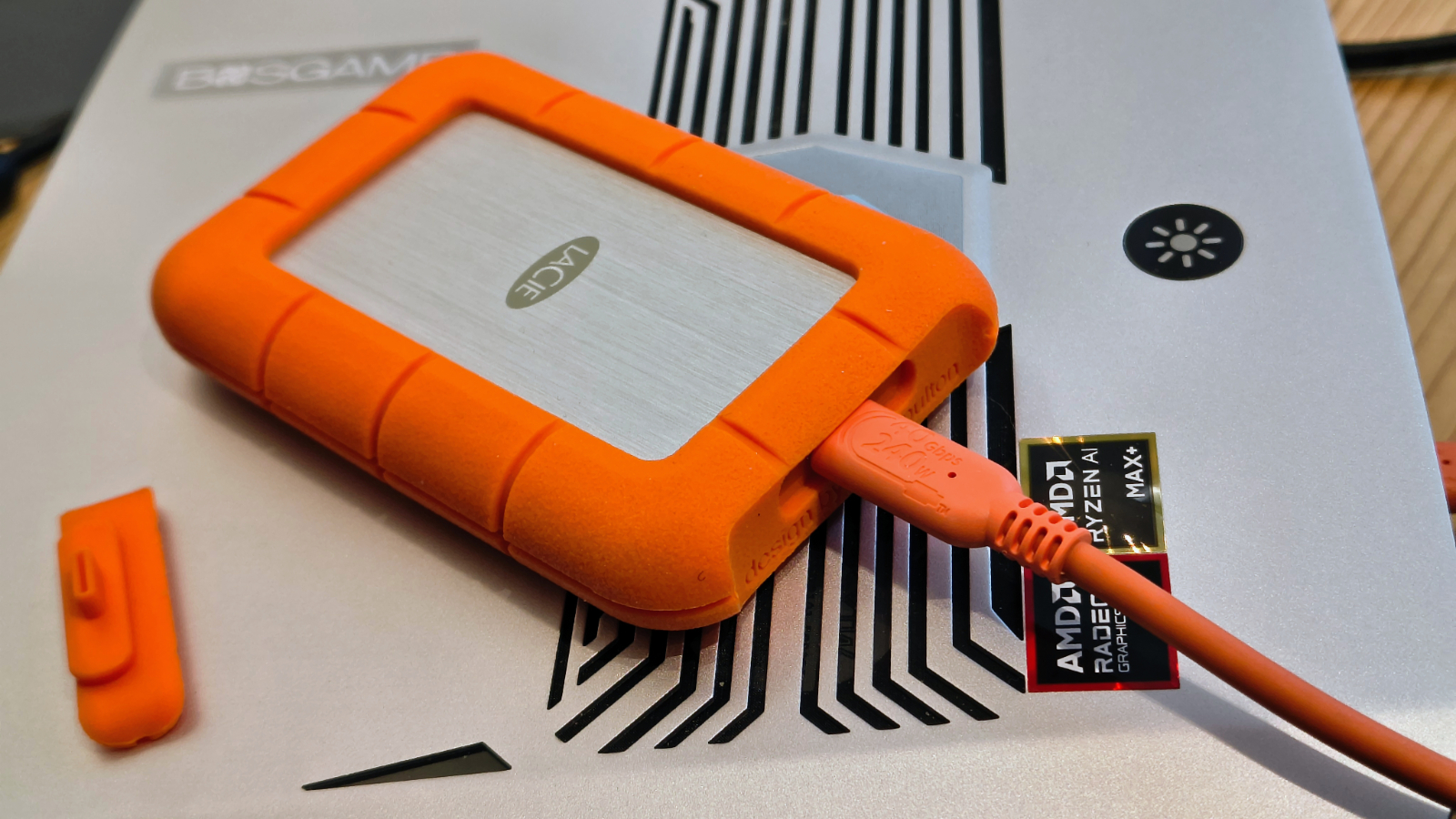
LaCie Rugged SSD4: Verdict
This drive is similar to the LaCie Rugged Mini SSD, sharing the same physical size but offering twice the performance, provided you have a 40Gbps USB4 port. That means it has the same poorly considered design, where the port cover can be lost, and the cable needs to be either always attached or a third-party pouch purchased for it and the drive to live.
Given how expensive this drive is, that seems remarkably low effort on LaCie’s part.
The software provided includes a useful backup tool and a mechanism to support Adobe’s struggling business model. I find it amusing that when I reviewed the Rugged Mini, the giveaway was a single month of Adobe Creative Cloud, and now it's two months.
If you don’t use Adobe, and creatives these days are running, not walking, away from those services, two free months off an expensive subscription service isn’t relevant.
What it does add over the Rugged Mini is hardware encryption, something that the Corsair EX400U lacks.
However, the big issue here is the price, which seems excessively inflated. If the price differential between the Corsair offering and this were narrower, then it might be the right choice, but the gap is currently too wide on the larger capacities.
And, talking of capacities, if Crucial can fit 8TB into an object less than half the size and a quarter of the volume, why can’t LaCie put that much capacity in this?
The answer to that question might be heat-related, since the rubber bumper isn’t likely to make a hot drive cooler, and the greater the capacity, the more likely it is to get hot.
As quick as this drive is, the speed doesn’t compensate for the repetition of mistakes made with previous LaCie rugged drives, and a price level that’s hard to justify.
Should I buy the LaCie Rugged SSD4?
Value | Expensive for a drive that doesn’t have a 5-year warranty or hardware encryption | 3 / 5 |
Design | An odd liferaft motif and a lack of creative thinking about the loss of the port plug or where the cable lives | 3 / 5 |
Software | Adobe trial, some useful software, but no firmware management | 3 / 5 |
Performance | Excellent performance for 40Gbps USB4 | 4/ 5 |
Overall | The speed and hardware encryption are good, but the price is too high | 4 / 5 |
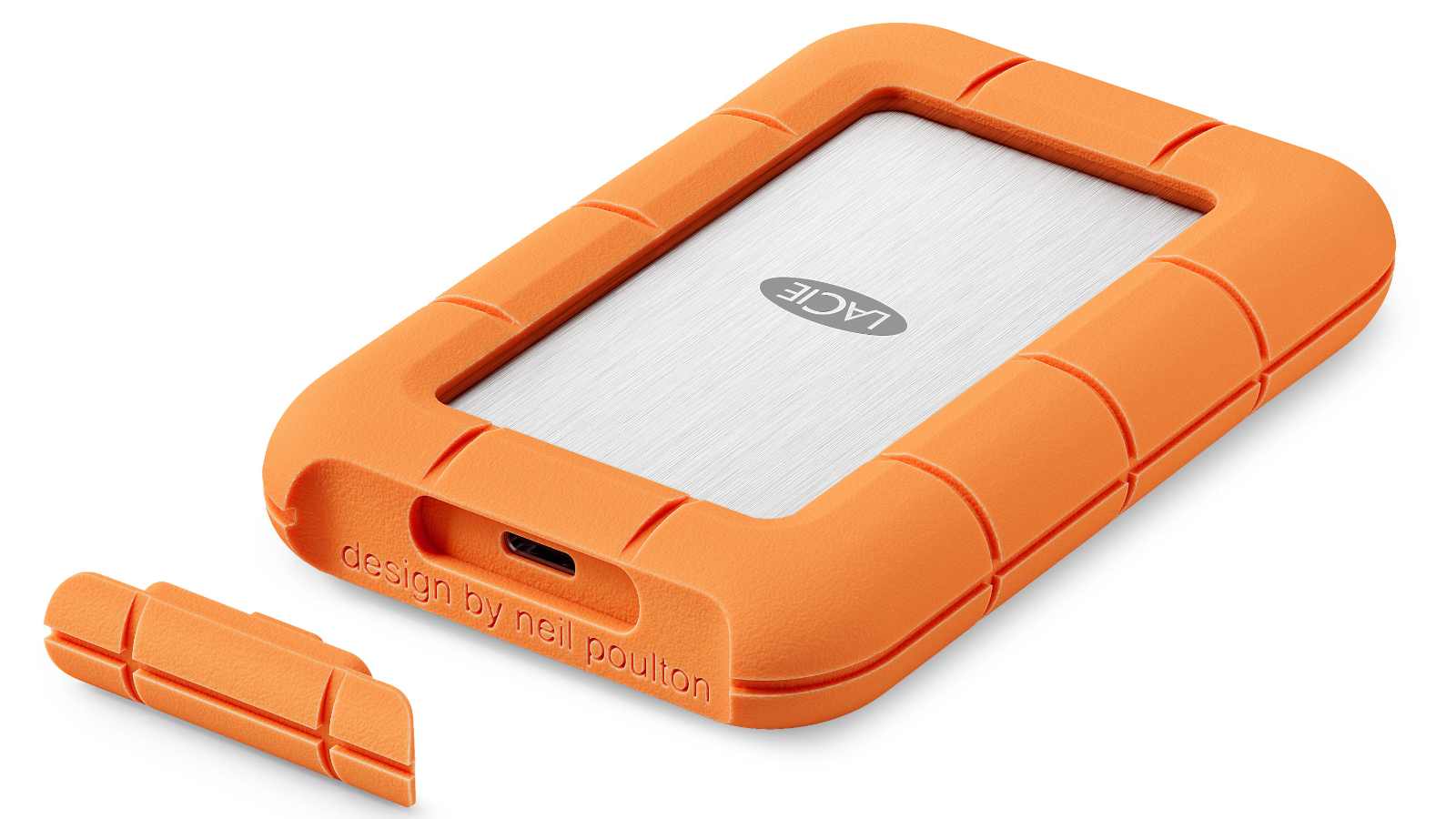
Buy it if...
You have USB4 40Gbps ports
There are many cheaper alternatives that offer encryption and come in larger capacities if you don’t need USB4 performance. This drive will work with the slower USB ports and Thunderbolt, but you might as well save some money and buy a cheaper one.
You copy big files
So far, the fastest USB4 drive we’ve tested can sustain read and write performance effectively over the long haul. But that assumes you have a USB4 in its 40Gbps form. If you do this, the drive doesn’t stall when the files get big.
Don't buy it if...
You use USB-A
Using USB 3.2 Gen 2 or Gen 1 on this drive will work if you have a suitable adapter, but the performance will be significantly less. If you don’t have USB4, then buying this drive won’t make file transfers any quicker than a much cheaper option.
Also consider
Crucial X10 Pro
With a very similar performance profile to the LaCie Rugged Mini, this drive is smaller, lighter, and includes hardware encryption. At $70 less for the 4TB model, the X10 Pro makes plenty of economic sense.
Read our full review of it here.
Kingston XS2000
This drive came out in late 2021, when Gen 2x2 drives weren’t a popular option.
While it does use plastic construction, it has an IP55 rating and should travel well enough. Costing less than $100 for the 1TB model, it delivers good sustained performance and hardware encryption.
Check out our Kingston XS2000 review
Corsair EX400U
Another USB4-capable drive with similar performance but a slightly lower price point. While this drive doesn’t offer hardware encryption, it is magnetic and works well with laptops.
Slightly heavier than the Rugged SSD4, but significantly smaller, and easier to carry.
Check out our Corsair EX400U review
For more storage on the go, we've tested out the best portable SSDs you can get.
Mark is an expert on 3D printers, drones and phones. He also covers storage, including SSDs, NAS drives and portable hard drives. He started writing in 1986 and has contributed to MicroMart, PC Format, 3D World, among others.
You must confirm your public display name before commenting
Please logout and then login again, you will then be prompted to enter your display name.
